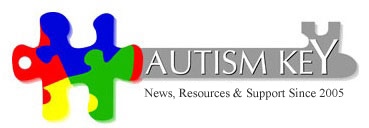Cognitive Behavior Therapy for Autism
Among the tried and true therapies available for autism is cognitive behavior therapy (CBT). In recent years, cognitive therapies developed in the 1950’s and 60’s evolved into cognitive behavior therapy as it is known today. CBT is based on the premise that how we think, feel and act all affect each other.
Autism luminary Dr. Tony Attwood uses CBT as the cornerstone of his practice with high-functioning individuals with autism. His CAT kit is a recent CBT tool based upon the premise that while these individuals lack innate social and emotional awareness, those skills can be successfully taught. The recommended starting age for CBT is age 8. For younger children,
Dr. Attwood recommends social stories and cartooning with blank thought bubbles to fill in how the child perceives a situation vs. what is actually happening.
CBT asks individuals with autism to become aware of him or herself, discovering their own triggers for anxiety and developing their own methods to deal with escalating emotions. Dr. Attwood suggests a thermometer drawing to track upsetting influences and a “toolbox” of go-to strategies to restore emotional equilibrium. The beauty is that it encourages the child to develop their own strategy for self-regulation, rather than having solutions imposed upon them. Because high-functioning individuals sense of logic is so keen, it is especially effective for them to learn to analyze their own feelings and those of others.
Another advantage is while many trained therapists are available to guide CBT, they are not entirely necessary. Using available resources like the CAT-kit, parents and teachers can successfully employ CBT in the home or in small groups. CBT carries no hazards or warnings and research indicates these results for individuals with autism:
• Are more likely to initiate positive social interaction with peers
• Provide more relevant solutions to social problems
• Obtain higher teacher-rated social skills scores
• Have reduced anxiety, depression, obsessive compulsive disorder and self-injury
• Have reduced levels of stereotypic and self-stimulatory behavior
• Have reduced disruptive behavior
• Have decreased inappropriate vocalizations
• Learn to exhibit appropriate play skills
My personal experience of using CBT for my high-functioning son is very positive. In cooperation with his middle school teacher, my son was able to respond to stress-inducing situations with his own self-soothing activities to the point that his meltdowns went from five or more a day to none. At home when he becomes anxious, he knows just what to do — get under his weighted blanket and listen to his iPod. Being able to take care of himself has bolstered his self-esteem and confidence. We used a workbook by Dr. Attwood, the precursor to the CAT-kit and experienced life-enhancing changes for the cost of a paperback.
Awareness of CBT can also be useful in dealing with low-functioning autism. Poised to medicate her son with anti-psychotics, a mother asked Dr. Attwood what to do about her low functioning child who tore up the house every time he returned home. Dr. Atwood answered that the child’s behavior had become ritualized and indicated an excess of anxiety. He suggested disrupting the pattern by having the child engage in physical activity, then enter the house through a different door. As far as medication, he believed anti-anxiety medication would be more appropriate.
Using principles of CBT, parents of low-functioning children can assume the role of ascribing motivations and solutions for them. Coupled with the benefits for those on the high and mid-ranges of the autism spectrum, cognitive behavior therapy is an excellent, but often underutilized form of treatment for individuals with autism.

